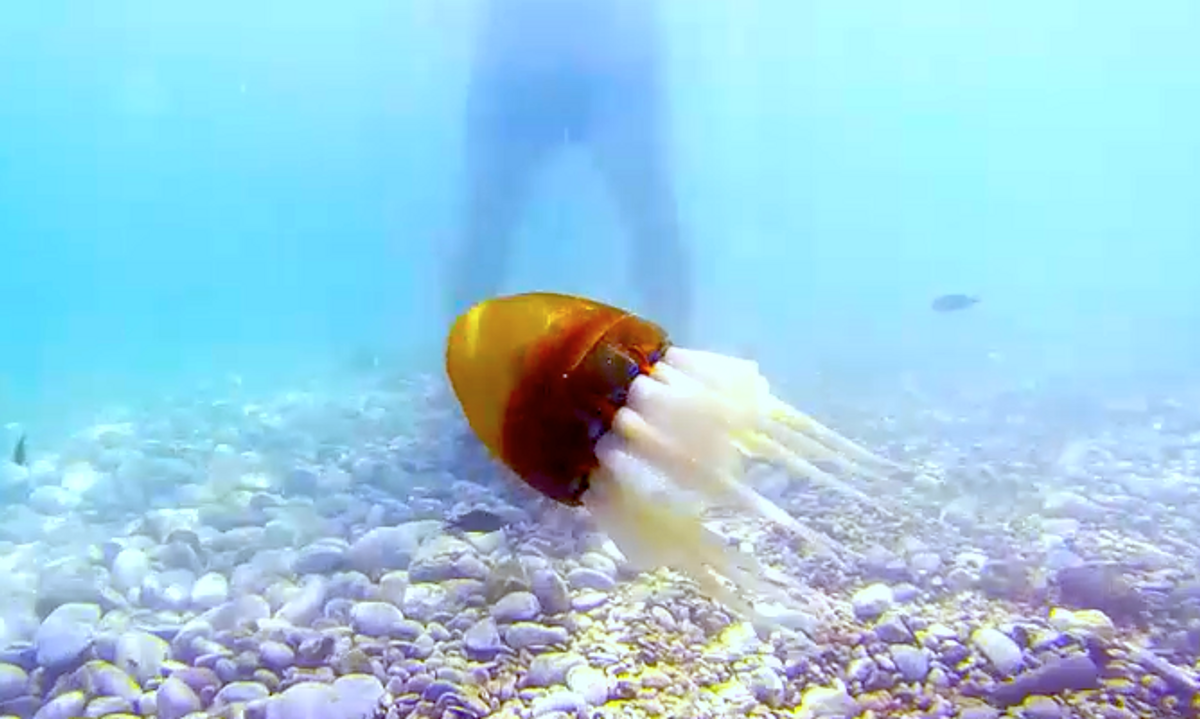Early last year, we wrote up some betentacled research from Greece that explored what gaits were most effective at propelling a robotic octopus through water. The researchers commented that they were working on adding another physical feature flaunted by the biological version of the octopus: a web between their tentacles, which they hypothesized might help swimming speed or efficiency. Now the researchers report that the addition of a soft and supple silicone web has nearly doubled the speed of the roboctopus, and not satisfied with that, the scientists have also taught it to crawl, carry objects, and swim free in the Aegean Sea.
The video below has four parts to it: the first shows the difference between the robotic octopus swimming with just flexible arms, and swimming with just flexible arms in addition to a web. The most obvious difference is the speed: just over 100 millimeters per second with arms only, and up to 180 mm/s (or 0.5 body lengths per second) with the web. This is a significant increase, obviously, but what's more important is the overall cost of transport (CoT), which is a measure of the efficiency of the robot (specifically, the ratio of the energy put in over the resulting speed). The CoT for the arms-only version is 0.85, whereas the web drops that down to 0.62. So yeah, having that web in there is better in almost every way.
Also in the video below are three other clips that aren't related to the paper but that we thought were pretty cool. The first clip shows the robot octopus crawling along the ground, which is a very typical gait for most real octopi who aren't in a hurry, to which yours truly can attest, as he has had many different species of octopus flee from him. The second clip has the robot octopus swimming along while carrying an object (note the yellow ball held by two tentacles), because just like a real octopus, it can do that. And the third clip shows the robot octopus swimming happily out at sea, completely self contained, in the Aegean. It's very relaxing, and remarkably realistic:
With the ocean swimming vids, the researchers pointed out to us that there are a bunch of little fish following the robot octopus around quite happily. They suggest that the robot might therefore make a good platform with which to observe ocean life without disturbing it too much, as long as you're not trying to observe something that is often made a meal of by eight-armed cephalopods.
"Multi-arm Robotic Swimming With Octopus-Inspired Compliant Web," by Michael Sfakiotakis, Asimina Kazakidi, Avgousta Chatzidaki, Theodoros Evdaimon, and Dimitris P. Tsakiris from the Foundation for Research and Technology-Hellas (FORTH) in Greece, was presented last week at the IEEE International Conference on Intelligent Robots and Systems (IROS) 2014 in Chicago.
Evan Ackerman is a senior editor at IEEE Spectrum. Since 2007, he has written over 6,000 articles on robotics and technology. He has a degree in Martian geology and is excellent at playing bagpipes.



